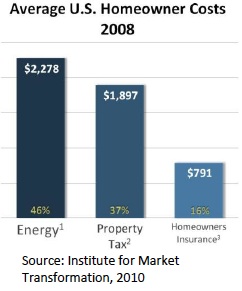Jen Weiss is Senior Finance Analyst at the Environmental Finance Center.
There is a small hole in the ceiling leading into the attic of Mr. Smith’s single-family home and the windows are a bit drafty. In the summer, the family’s 15 year old air conditioning unit runs 24 hours a day trying to keep Mr. Smith and his family cool, and in the winter the electric base boards crank out heat to keep them warm. The Smiths try not to keep the temperature in the house too high or too low, but their monthly electricity bills still approach $500 in some months. The family is finding it increasingly difficult to pay their utility bill each month, but unlike cable or telephone service, turning off their electricity is not an option.
The Smith family is, of course, a hypothetical example. Unfortunately, they are an example of a trend that is becoming more frequently found across the Southeast and likely across the nation. Low- to moderate-income families with older homes are finding it difficult to pay their monthly utility bills. As electric rates continue to go up, these homeowners are turning to their utilities for help. Help with ideas on how to reduce energy use, help with weatherization of their homes and help with their utility bills. And many utilities are listening – and making changes. Continue reading









